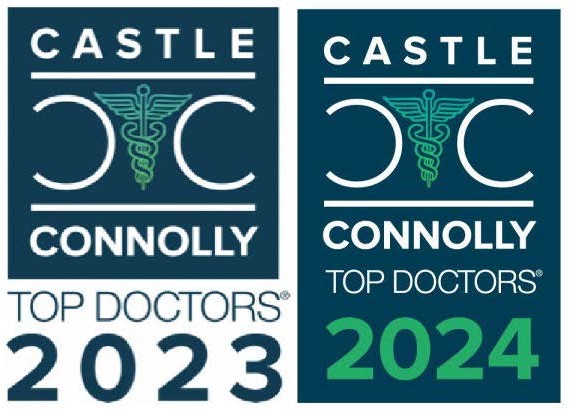Non-Neuropsychiatric Disorders
TMS may be helpful as an off-label treatment. Many clinical studies have been performed that support such treatments, but TMS is not yet approved by the FDA to treat disorders beyond depression and OCD. For off-label treatments, the TMS device is set to different parameters in order to trigger appropriate and beneficial responses in the brain. In Europe, the CE (European equivalent of the FDA in the US) approved TMS to treat depression, OCD, bipolar depression, PTSD, Alzheimer’s disease, chronic pain, addiction, depression with anxiety, and smoking cessation.
TMS is a safe and effective alternative to medications that does not use anesthesia or have long-term side effects. To learn if you’re a candidate for TMS treatment, call the TMS Institute at 480-448-2916 to schedule a detailed evaluation.
Memory and Cognition
It is estimated that about 24,000,000 people worldwide suffer from cognitive neurodegenerative diseases. Memory and cognition are commonly affected in brain disorders such as in schizophrenia, depression, dementia, Alzheimer’s disease, Parkinson’s disease, stroke, traumatic brain injury, concussions, and multiple sclerosis. The eight most common neurodegenerative diseases affecting cognition include Alzheimer’s Disease, Parkinson’s Disease, Dementia with Lewy Bodies, Primary Progressive Aphasias (PPA), behavioral variant of Frontotemporal Dementia, Corticobasal Syndrome, Progressive Supranuclear Palsy, and Posterior Cortical Atrophy. Mild cognitive impairment (MCI) affects approximately 20% of adults 65 and older. Around 10–15% of individuals with MCI convert to dementia annually.
ADD/ADHD is also a common co-morbidity of brain disorders that affect memory and cognition. The degree to which cognition is impacted can vary from mild to severe dysfunction with impairments in multiple domains ranging from information processing, working memory, executive functioning, and attention. All of these impairments can greatly impact daily functioning, negatively affecting a person’s social and professional success as well as their ability to live independently.
Current treatments for patients with memory and cognition problems include rehabilitation, cognitive remediation, physical exercise, cognitive enhancing medication, and various brain stimulation techniques. Medication therapies are greatly advancing but they have been unable to consistently prove efficacy in controlled clinical trials. However, TMS treatment works by increasing brain excitability and activity with minimal side effects, offering a much more advantageous approach compared to medication therapy.
A meta-analysis in 2021 that reviewed 12 studies revealed that performing high frequency, multi-site TMS treatment for several sessions on patients with mild cognitive impairment (the intermediary between aging and dementia and potential Alzheimer’s disease) can significantly improve cognitive function
TMS therapy in patients with MCI has been shown to delay further decline in cognition.
Pain and Headaches
Regardless of the cause, pain is ultimately experienced in the brain. This is true whether it stems from a bulging disc, arthritis in the knee, nerve damage, a hangover from too many celebratory drinks, or a bruised and scraped elbow from a failed skateboarding attempt. Networks of neurons in the brain relay pain signals from the spinal cord into your conscious awareness—and, thus, pain ensues.
Some pain is temporary (like that bruise). However, chronic pain is also a very common condition that affects millions of people. Some of the most common forms of chronic pain come from the following disorders:
- Chronic neuropathic pain
- Fibromyalgia
- Complex regional pain syndrome
- Trigeminal neuralgia
- Post-herpetic neuralgia secondary to shingles
- Central pain
- Post-stroke pain
- Multiple sclerosis
Treatment for Pain and Headaches
The most common treatment strategies for pain use a “bottom-up” approach, which tries to heal the damaged tissue in the first place (a literal Band-Aid approach), or block transmission of pain signals to the brain via painkillers. These strategies can be ineffective and can even be dangerous when used long-term—just consider the opioid epidemic.
TMS uses a “top-down” approach, helping your brain ignore pain signals that are too strong or have gone on too long and are no longer needed. TMS treatment can alter the activity of these neural networks to reduce the perception of pain without the risks associated with medications.
Chronic Pain
When receiving TMS treatment for pain, about half of patients will experience a significant reduction in their discomfort by 33% or more. Most patients start enjoying relief within several days of their treatment, and this relief can last many months. Regular maintenance treatments can help the benefits last longer.
Migraine Headaches
TMS treatment can be used at high frequency stimulation as prophylaxis to prevent migraine headaches. Clinical studies have shown TMS treatment to reduce the frequency of migraine headache attacks by at least 50%, if not more, in more than 70% of patients.
Tinnitus
If you suffer from chronic tinnitus, a chronic ringing in the ears, you are not alone. About 21 million adults in the U.S. have been diagnosed and/or treated for tinnitus in the past year and 33% of them had near-constant symptoms. Tinnitus is associated with anxiety, depression, sleep disturbance, and reduced quality of life. It is difficult to treat and counts with very limited treatment options—until now. TMS treatment has been available for many years but has flown under the radar of clinicians and patients alike.
Tinnitus is thought to involve two key problems. First, the auditory cortex (the part of the brain responsible for processing sound) is overactive, leading to the ringing sound. Second, the part of the brain that would usually help you tune out or ignore the unhelpful information does not do its job. In fact, it begins to pay even more attention to the annoying, unnecessary noise.
TMS can target both issues by reducing the overactivity of the auditory cortex and enhancing the activity of the “noise cancelling” network.
Types of TMS Treatments for Tinnitus
TMS treatment results for tinnitus indicate that 20–50% of patients will have some improvement. The benefits can last anywhere from weeks up to six months post-treatment. The graph shows a greater decrease in tinnitus symptoms over time in patients receiving real TMS (solid line) compared to patients receiving a placebo (dashed line). (RL Folmer et al, 2015).
Traumatic Brain Injury / Concussion
Mild traumatic brain injury (MTBI) is a misnomer because even a “mild” case can result in a profound negative impact on an individual’s quality of life. There are a myriad of symptoms (known collectively as post-concussive syndrome) that can occur after a MTBI and/or concussion including dysfunctions in mood, attention, and memory. Chronic headaches are one of the most debilitating of conditions in those with MTBI (especially for active or retired military personnel).
Studies have shown that individuals with MTBI have diffuse axonal injury in the major cortical white matter tracts, which are critical for connectivity with different regions of the brain. Medications have their limitations with restoring the brain to the state it was before the MTBI and can come with side effects and risks. TMS is a medication-free alternative.
TMS for Patients with Post-Concussive Syndrome
The mood change most often associated with post-concussive syndrome is depression, which can be successfully treated with rTMS. The common memory changes that occur can also be treated with high frequency stimulation at the same treatment location.
rTMS has been shown to correct pre-existing brain structural abnormalities and restore functional deficits associated with strokes and depression. As such, it is highly likely that it will assist in correcting structural abnormalities in individuals that suffer a MTBI.
Chronic Fatigue Syndrome
Chronic fatigue syndrome (CFS), also known as myalgic encephalomyelitis, is a long-term, complex pathological condition characterized by extreme fatigue and other non-specific symptoms such as pain, sleep disturbance, and difficulty in concentration. Rest alone will not address these issues and taking long-term medications can be risky. CFS can deteriorate every part of a person’s life. If you’re tired of feeling tired, an alternative to traditional therapies may help.
CFS patients often experience significant disability in their activities of daily living (ADL), sometimes becoming homebound and even bedbound in severe cases. Recent studies have identified key functional and structural abnormalities in the brain of CFS patients, including lesions in the dorsolateral prefrontal cortex (DLPFC), which seems to be an integral part of the neural network involved in the sensation of chronic fatigue symptoms.
What does this mean for TMS patients? High frequency stimulation at the DLPFC can increase neurotransmission and activity in this region, in turn reducing the fatigue associated with this chronic fatigue syndrome.
Long-hauler COVID
A large study shows that one in three Covid-19 survivors suffers symptoms 3–6 months after getting infected. Most common symptoms reported include breathing problems, abdominal pain, change of bowel habit, diarrhea, fatigue, overall pain, anxiety, and depression.
Researchers at the University of Oxford, the National Institute for Health Research, and the Oxford Health Biomedical Research Centre studied symptoms in more than 270,000 people recovering from Covid-19. They found that the nine features of long Covid were detected by clinicians more frequently in those who had been hospitalized and slightly more often in women.
Researchers have also found in long-hauler COVID-19 that there is an important link between fatigue, “brain fog,” and central nervous system dysfunctions. These are characterized by frontal lobe cognitive impairments and altered neurotransmission.
TMS for Chronic fatigue syndrome
High frequency stimulation with TMS therapy has been shown to improve the frontal lobe cognitive deficits but to also increase neurotransmission.
Tremors / Movement Disorders
Tremor is the most common movement disorder, but some features of movement disorders may be difficult to distinguish from one another. The most common tremor disorders include:
Essential tremor
- This is the most common tremor syndrome, occurring in 4% of adults over the age of 40
- Typically presents as a combination of postural and action tremors of the arms. However, in some there can be involvement of the head, larynx (voice), legs, and trunk
- The mainstay of treatment are propranolol and primidone (medications), but drugs only result in about 50% improvement in symptoms—which is why many individuals discontinue their use after a high incidence of side effects
- More aggressive treatments include deep brain stimulation (DBS) and focused ultrasound in severe, medication-refractory cases, but these options have limitations such as side effects and high costs
- It is thought that the main areas of the brain triggering the tremors include overactivity in the cerebellum and the motor cortex
Parkinson’s disease (PD)
- Parkinson’s disease is a neurodegenerative disorder characterized by motor symptoms including tremor, rigidity, bradykinesia, and postural instability
- The most classic tremor in PD is a resting tremor (which usually starts on one side of the body) and postural tremors
- These tremors are most commonly treated with dopaminergic and anticholinergic medications, which have significant side effects. In more severe, medication-refractory cases, deep brain stimulation can be considered, but it is invasive and costly
TMS for Parkinson’s Disease
Many studies have demonstrated improvements in motor symptoms with rTMS for Parkinson’s disease.
TMS for Tremors and Movement Disorders
TMS has been studied for tremors to determine the potential pathophysiology of the tremor and how to reduce the frequency and/or intensity of the disorder. TMS treatment may be a suitable alternative or complement treatment for some with tremors and movement disorders.
Weight Loss
Addressing weight loss with TMS treatment should begin with considering the root cause of obesity. Binge-eating disorder can lead to obesity, but not always, and there are other causes for obesity. It is also important to bear in mind that eating disorders can be related to other eating disorders. For example, binge-eating disorder and bulimia often co-exist. When obesity is caused by an eating disorder, particularly when it exists in tandem with other restrictive or purge-based eating disorders, using TMS in order to decrease food cravings may not be suitable since cravings are not the reason many people binge.
However, if obesity is caused by overeating—and not necessarily by a binge eating disorder—weight loss has been shown to be achieved with TMS therapy by triggering early satiety (feeling full earlier), decreased food cravings, and decreased food (caloric) intake with high frequency stimulation.

Call Our New Patient Coordinator for a Free Consultation.
Our New Patient Coordinator is here to answer all your questions so you can make the most informed decision.
She can explain our treatment options and protocols, fees, insurance, and more. She can also schedule you for a consultation with one of our doctors.
From there, we can determine if you may benefit from MeRT or TMS treatment, and you can decide if you would like to move forward.
We hope you will consider getting more information. Call the New Patient Coordinator at 480-448-2916 for more information, or fill in the form below and we will contact you.













